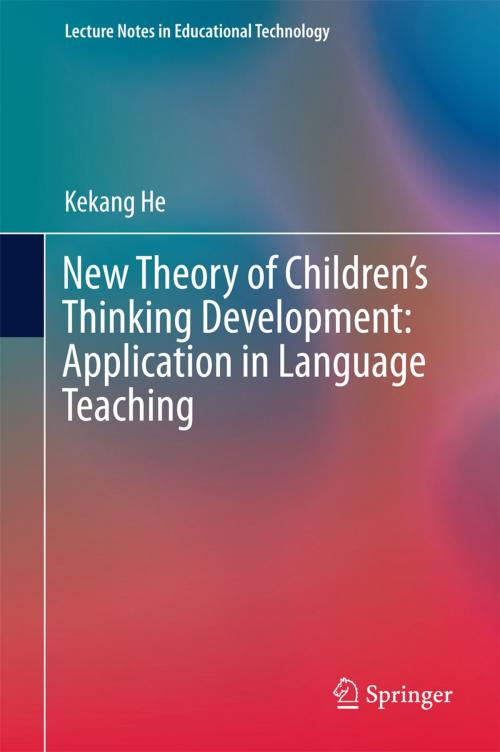New Theory of Children’s Thinking Development: Application in Language Teaching
Nonfiction, Reference & Language, Education & Teaching, Teaching, Language Experience Approach, Preschool & Kindergarten, Language Arts| Author: | Kekang He | ISBN: | 9789812878373 |
| Publisher: | Springer Singapore | Publication: | October 23, 2015 |
| Imprint: | Springer | Language: | English |
| Author: | Kekang He |
| ISBN: | 9789812878373 |
| Publisher: | Springer Singapore |
| Publication: | October 23, 2015 |
| Imprint: | Springer |
| Language: | English |
This book proposes a new theory on children’s thinking (cognitive) development. According to this theory, the stages of said development should be divided into four stages: first, the stage of animalistic thinking (birth–before possessing basic language ability); second, the stage of elementary thinking (beginning to possess basic language ability–beginning to possess proficient oral ability); third, the stage of intermediate thinking (beginning to possess proficient oral ability–before the formation of comprehensive cognitive ability); and fourth, the stage of advanced thinking (after the formation of comprehensive cognitive ability). In this context, thinking includes logical thinking, visual thinking and intuitive thinking. Based on the new theory, the author points out the serious negative impact that Piaget’s stage theory of children’s cognitive development has had on Chinese language education in China. The book also offers a number of practical principles, such as five teaching activities for language teaching of extension, typing, writing, passage, and thinking.
This book proposes a new theory on children’s thinking (cognitive) development. According to this theory, the stages of said development should be divided into four stages: first, the stage of animalistic thinking (birth–before possessing basic language ability); second, the stage of elementary thinking (beginning to possess basic language ability–beginning to possess proficient oral ability); third, the stage of intermediate thinking (beginning to possess proficient oral ability–before the formation of comprehensive cognitive ability); and fourth, the stage of advanced thinking (after the formation of comprehensive cognitive ability). In this context, thinking includes logical thinking, visual thinking and intuitive thinking. Based on the new theory, the author points out the serious negative impact that Piaget’s stage theory of children’s cognitive development has had on Chinese language education in China. The book also offers a number of practical principles, such as five teaching activities for language teaching of extension, typing, writing, passage, and thinking.















